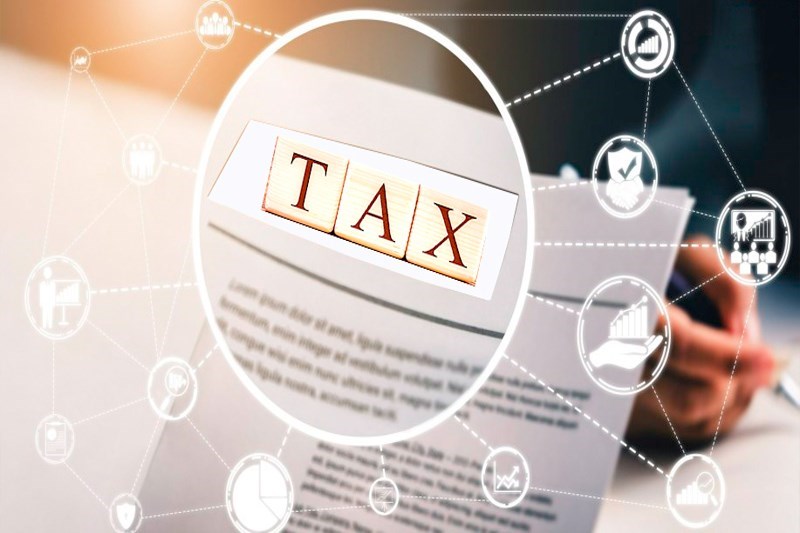Process of evaluating, classifying, and handling the results of classifying the risk level of tax declaration documents in Vietnam
What are the regulations on process of evaluating, classifying, and handling the results of classifying the risk level of tax declaration documents in Vietnam?- Hoang Quyen (Long An)

Process of evaluating, classifying, and handling the results of classifying the risk level of tax declaration documents in Vietnam (Internet image)
Regarding this issue, LawNet would like to as follows:
On January 26, 2024, the Director General of the General Department of Taxation issued Decision 98/QD-TCT on the process of applying risk management for selecting Value Added Tax declaration dossiers, Corporate Income Tax, and Special Consumption Tax for inspection at the tax authority headquarters.
Process of evaluating, classifying, and handling the results of classifying the risk level of tax declaration documents in Vietnam
According to Article 6 of the Process promulgated together with Decision 98/QD-TCT in 2024, regulations on assessment, classification, and handling of risk level classification results of tax declaration documents are as follows:
1. General principles
- Analyzing, evaluating, and classifying risk levels to select VAT, CIT, and special tax documents for inspection at the tax authority headquarters is done automatically and centrally on the Risk Management application.
- On a monthly basis, the risk management department at management agencies at all levels directly managing taxpayers coordinates with the information technology department to use risk management applications to select VAT, corporate income tax, and special tax documents of taxpayers as follows:
+ For VAT and STTDB technical documents: assessment and classification of risk levels are carried out periodically on the 25th of every month. In the event that an employee has a revised or supplemented Technical Document, the assessment and reclassification of the risk level of the revised or supplemented technical document will be carried out on the 25th of the following month.
+ For CIT Technical Documents: the assessment and classification of risk levels are carried out periodically on April 25. In cases where the taxpayer has a CIT declaration period other than the calendar year or has amendments or supplements to the CIT Technical Document, assessment and classification of risk levels are carried out periodically on April 25, July 25, and October 25.
- Based on the total risk score of technical candidates and risk threshold, the risk management application automatically classifies the risk level for each VAT Technical coefficient, corporate income Technical coefficient, and special market Technical coefficient according to one of three levels: high risk, medium risk, or low risk. The results of the risk analysis and risk level classification for employees' technical documents are compiled according to Form No. 01-KTTB/QTr-QLRR issued with this Procedure.
2. Development of a risk threshold
- Risk threshold is the basis for classifying the risk level of Technical coefficient into 3 levels: high risk, medium risk, and low risk. Risk thresholds must be approved by the system and take effect from the date of approval. Risk thresholds are adjusted and issued according to management requirements in each period and guided by the General Department of Taxation as a basis for classifying taxpayer risks.
- Risk management application allows the choice of 02 methods to determine the high-risk threshold:
+ Absolute number method: the number of student candidates with signs of high risk is determined on the basis of student candidates with a high total risk score and number of high risk criteria indicators; or the number of Technical coefficient with a high total risk score is specifically assigned to each tax authority.
+ Relative number method: the number of students with signs of high risk is determined by the percentage of students with the highest total risk score and the number of criteria indicators identified as high risk.
The ratio (number) of test students classified as low risk corresponds to 50% of the total number of test students taken from the lowest total risk score or higher.
Ratio (number) of test students classified at average risk level: is the rate (number) of test students remaining after subtracting the rate (number) of high-risk test students and low-risk test students.
- In case a technical candidate falls under the high risk threshold but has the same total risk score, then the sub-criteria will have results from high to low risk with the following order of priority:
|
No |
Criterion index |
|
I. |
VAT declaration documents |
|
1 |
[Total value of goods and services purchased this period compared to the average of the previous 12 months (or 4 quarters)] - [Total revenue of goods and services sold this period compared to the average of the 12 months (or 4 quarters) immediately preceding]. |
|
2 |
The ratio of "Revenue of goods and services sold subject to tax rate 0%/Total revenue of goods and services sold" this period compared to the previous period. |
|
3 |
Ratio of "Revenue of non-taxable goods and services sold/Total revenue of goods and services sold" this period compared to the previous period. |
|
4 |
The ratio of "VAT on purchased goods and services/Total value of purchased goods and services" this period compared to the previous period. |
|
5 |
The ratio of "VAT on goods and services sold/Total revenue of goods and services sold" this period compared to the previous period. |
|
II. |
Corporate income tax declaration documents |
|
1 |
Ratio of "Total revenue deductions/Revenue from sales and service provision" this period compared to the previous period. |
|
2 |
The ratio of "Buyers paying before the end of the period/Revenue from sales and service provision" this period compared to the previous period. |
|
3 |
Ratio of “Total provisions at the end of period/Total expenses” this period compared to the previous period. |
|
4 |
The ratio of "Payables to employees at the end of the period/Total expenses" this period compared to the previous period. |
|
III. |
Excise tax declaration dossier |
|
1 |
Ratio of "Sales revenue (without VAT) of goods and services not subject to Excise tax/Total revenue of goods and services sold" this period compared to the previous period. |
|
2 |
The ratio of "Excise tax deducted/Total amount of Excise tax payable" this period compared to the previous period. |
|
3 |
The non-deductible difference between the amount of Excise tax paid at the import stage and the amount of Excise tax sold domestically. |
3. Evaluation and classification of Technical coefficient
Based on the results of classifying the risk level of technical documents, the risk management application automatically selects high-risk technical documents for VAT, CIT, and special income according to Form No. 02-KTTB/QTr-QLRR issued with this Procedure.
The list of employees with high-risk test scores expected to be inspected at the tax authority headquarters is automatically supported by the Risk Management application according to Form No. 03-KTTB/QTr-QLRR issued with this Procedure according to the following principles:
- Employees have from one to three technical documents (VAT, CIT, and Excise tax) with high risk.
- The list of employees expected to be selected to check the technical documents at the headquarters of the agency does not overlap with the list of employees in the inspection plan at the headquarters of the agency that has been approved by the leaders of the agency before December 30 every year according to the provisions of the Tax Inspection Procedure.
No later than the 28th of every month, the risk management department at the tax authority at all levels directly managing the employee shall submit forms No. 02-KTTB/QTr-QLRR and 03-KTTB/QTr-QLRR, which shall be forwarded to the Leader of the Tax Inspection Department directly managing taxpayers to assign review and inspection.
In addition, the Risk Management department can print the Technical Examination Comment Form produced by the application according to Form No. 04-KTTB/QTr-QLRR, Form No. 05-KTTB/QTr-QLRR, and Form No. 06-KTTB/QTr-QLRR issued together with this Procedure to support the Tax Inspection department in reviewing and checking taxpayers' technical documents (if necessary).
Nguyen Ngoc Que Anh
- Key word:
- tax declaration
- in Vietnam
- Number of deputy directors of departments in Vietnam in accordance with Decree 45/2025/ND-CP
- Cases ineligible for pardon in Vietnam in 2025
- Decree 50/2025 amending Decree 151/2017 on the management of public assets in Vietnam
- Circular 07/2025 amending Circular 02/2022 on the Law on Environmental Protection in Vietnam
- Adjustment to the organizational structure of the Ministry of Health of Vietnam: Certain agencies are no longer listed in the organizational structure
- Vietnam aims to welcome 22-23 million international tourists in Vietnam in 2025
-

- What are penalties for late submission of tax ...
- 08:05, 02/02/2025
-

- Schedule for submitting tax declarations for 4th ...
- 11:01, 24/01/2025
-

- Emergency response and search and rescue organizations ...
- 10:29, 11/09/2024
-

- Handling of the acceptance results of ministerial ...
- 09:30, 11/09/2024
-

- Guidance on unexploded ordnance investigation ...
- 18:30, 09/09/2024
-

- Notable new policies of Vietnam effective as of ...
- 16:26, 11/04/2025
-
.Medium.png)
- Notable documents of Vietnam in the previous week ...
- 16:21, 11/04/2025
-
.Medium.png)
- Notable documents of Vietnam in the previous week ...
- 16:11, 02/04/2025
-
.Medium.png)
- Notable new policies of Vietnam to be effective ...
- 16:04, 02/04/2025
-
.Medium.png)
- Notable new policies of Vietnam effective from ...
- 14:51, 21/03/2025
 Article table of contents
Article table of contents
